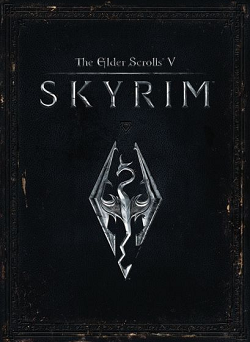There are many different elements when it comes to computer graphics.
Here are some of the most important ones.
Print Media
Print media is all the physical graphics needed for advertising a game e.g. game posters, billboards, the game case graphics, manuals, strategy guides etc. This is extremely important for distribution purposes because the more people see these advertisements, the more potential purchases the game will get. Although people don't necessarily look at a poster and go purchase the game but it makes them aware of the product and they will most likely remember it.
In Game Graphics
The in game graphics consist of
- Texture Art
Texture art is essentially an in game surface, regular things that you see in games like floors, walls, doors and other props/objects are all applied textures to make them look real or how the developer wants them to look. In simpler games there are more 2D designs rather than 3D whereas in newer complex games to make a realistic looking texture both 2D and 3D designs are used.
- HUD/in game interface
The in-game interface shows the player their health, radar, objective, ammunition/weapons, currency, XP bar etc. Some games' HUD stays on the screen throughout the whole game but in some games the HUD will appear in times of combat and vanish for key parts of the story. #
- Background graphics
Background graphics are used to create horizons, skies, or anything beyond the playable area in a game. Backgrounds tend to be 2D pictures as the player can only see the background and not access that area of the game.
In game graphics are generally everything you can visibly see in a computer game.
Concept Art
Concept art
is the development of an initial idea. Developers would have brainstorming
sessions and meetings to gather ideas from their teams and then would sketch
them out and eventually re-design them on computers. If the design and idea is
good enough it will be implemented into the game but at any point in the
development cycle it can be altered or even taken back out of the game.
For example this is the concept art for the Suros Regime in Destiny. As you can see before the gun was put into the game it initially had a different look and name.
Final Product
Graphics Specification
Graphics specification is vital for a creator to know what they're aiming for, most clients will always give the developer a brief or spec before they begin working
Client Needs
The client will most likely always give the creator/developer a client brief that includes everything that the client wants in that project e.g. if a designer was told to create a character they would be told what style the character should etc.
Audience
The client would also want everything in that project to target a certain audience, this is most likely due to the fact that a publisher would want a specific age rating for the game. An example of this would be if the publisher wanted a E for Everyone ESRB rating, the game couldn't contain blood, strong language etc.
Thumbnail Sketching
Thumbnail sketches are a series of ideas for certain things in the game like characters, backgrounds, cars etc. The client brief would sometimes ask for a certain amount of sketches, for example:
- 2x Character Models
- 1x Setting
- 4x Weapons
- 2 x Character specific vehicles.
These sketches will be altered and developed during the development process of the game.
These are some thumbnail sketches for the Titan character class in Destiny.
Visual Style
The visual style is the art style used in a computer game, the client would usually specify what type of style they want the game to be or they may ask the creator to experiment with a few and compare and contrast them to find the best one.
Composition
Composition is essentially the order of things seen in an image and the way certain things are placed. The rule of thirds is important when creating an image, it means placing objects in a certain way creates more interest for the viewer. for example, the rule of thirds splits an image in to nine sections with two equal vertical lines and two equal horizontal lines, if an object is place where the two lines meet it attracts the attention of the viewer.
To amplify this effect the artist can also use 'leading lines' to their advantage.
Leading lines are essentially subliminal arrows pointing towards the object that the image focuses on.
Typography
Typography is the fonts that are used within a game. Many designers are tasked with creating a font for a game, the font has to fit the style and feel of the game.
Technical Considerations
When creating components for a computer game, a developer must take care of of their designs and creations by managing them in an orderly fashion, this is important because losing files during a development process could be extremely damaging to a time schedule.
Also some images will be created with specific files due to optimizing reason, images such as sprites and backgrounds use JPEG's and BMP's.






No comments:
Post a Comment